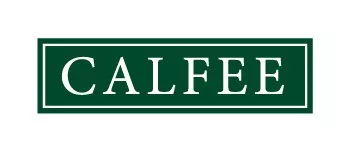- within Intellectual Property topic(s)
- in United States
- with readers working within the Law Firm industries
- within Intellectual Property and Real Estate and Construction topic(s)
Artificial Intelligence (AI) – most notably generative AI like ChatGPT, Midjourney®, and Google's Veo 3 [require a mark?] text-to-video model – is rapidly reshaping industries, revolutionizing everything from content creation to complex problem-solving. As AI-generated works become more prevalent, novel legal issues concerning ownership and protection of intellectual property (IP) rights have emerged.
In Part Four of this blog series, we explore how to responsibly use AI with trademarks. If you want to look further into other areas of overlap between AI and IP, review our previous posts related to patents (Part One), trade secrets (Part Two), and copyrights (Part Three).
Use Caution When Involving AI in Trademarks
Trademarks protect brand identifiers – such as words, phrases, logos, symbols, sounds, colors, etc. – that distinguish one company's goods or services from others. The goal of associating trademarks with specific goods and services is to help prevent consumer confusion and safeguard a brand's reputation by ensuring that competitors cannot potentially use similar marks in the same industry. Common law trademark rights automatically apply in the localities where the mark is actually in use, though a federal registration may be filed to secure a presumption of nationwide protection. In either case, there is no expiration date on how long a trademark can be used provided that the use is continuous and not interrupted.
Current laws surrounding trademarks do not restrict use of AI in generating brand identifiers. Since the function of trademarks is to prevent consumer confusion, not reward creative human effort, there are no restrictions on the use of AI to create a trademark for your business. Similarly, there is no requirement that you disclose that AI was used to generate a logo, tagline, name, etc. that is trademarked. That being said, caution should be used whenever you are relying on the output of an AI model to create material that you use to represent your brand. As was the case covered in our copyrights post, since AI models are trained on data that comprise existing copyrighted and/or trademarked material, it is possible that the model's output can contain this protected material. Using an AI-generated trademark could therefore violate existing copyrights or trademarks of other people or companies if it comprises the infringing material. Use of AI-generated material as a trademark may further limit your ability to protect sufficiently artistic logos with copyrights due to restrictions on protecting AI-generated content. To limit the risk that an AI-generated trademark may violate the trademarks or copyrights of others, an IP attorney can perform a search of registered copyrights and trademarks to provide a clearance opinion before filing a trademark application.
Key Takeaways
While patents and copyrights generally require significant human involvement in the creative aspects where IP seeks to protect and incentivize, trade secrets and trademarks have no such requirements, and AI involvement here generally presents a lower threshold of risk. If you have any questions or concerns about how using AI can impact your intellectual property rights or risk infringing the rights of others, contact Calfee's IP attorneys. We look forward to helping you responsibly embrace these new and exciting technologies while avoiding the potential pitfalls this powerful new technology brings.
Series: Rethinking IP in the Age of AI
Part One: A New Frontier for Patent Law by Michael E. Glennon and Bradley S. Pulfer
Part Two: Trade Secrets – To Disclose or Not to Disclose by Michael E. Glennon and Bradley S. Pulfer
Part Three: Copyrights and AI-Assisted Creations by Michael E. Glennon and Bradley S. Pulfer
The content of this article is intended to provide a general guide to the subject matter. Specialist advice should be sought about your specific circumstances.



